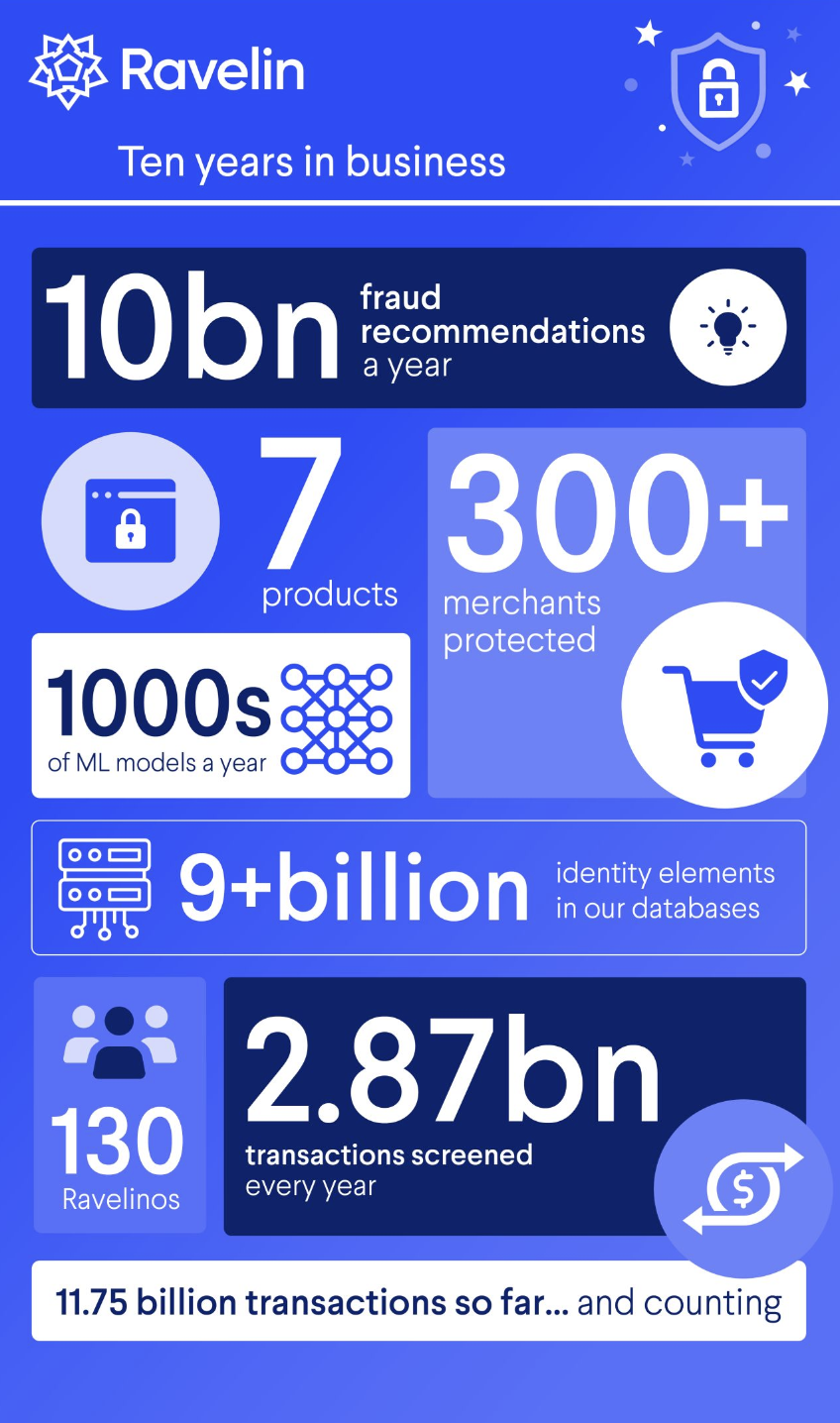 With Black Friday and Cyber Monday fast approaching, ecommerce retailers are bracing for one of the busiest, and riskiest, shopping weekends of the year. While these high-volume trading days offer opportunities for increased sales, they also create a prime environment for fraud. Ravelin, a leader in AI-powered fraud prevention, is urging retailers to adopt a systematic approach to safeguard their businesses and maximise profits.
With Black Friday and Cyber Monday fast approaching, ecommerce retailers are bracing for one of the busiest, and riskiest, shopping weekends of the year. While these high-volume trading days offer opportunities for increased sales, they also create a prime environment for fraud. Ravelin, a leader in AI-powered fraud prevention, is urging retailers to adopt a systematic approach to safeguard their businesses and maximise profits.
“Fraud spikes at this time of year because fraudsters know retailers are under pressure to process high transaction volumes,” said Martin Sweeney, CEO of Ravelin. “Without the right systems in place, businesses risk significant losses. Automation is critical to managing transactions at scale while keeping fraud at bay and it isn’t just a convenience – it’s essential for survival during peak trading periods.”
Here is Ravelin’s quick guide for retailers looking to maximise sales across Black Friday and Cyber Monday.
Learn from past data
Start by analysing last year’s Cyber Weekend data. Key questions to ask include:
How many transactions occurred over the weekend?
What was the chargeback rate?
Did fraud patterns emerge, such as multiple attempts from the same IP regions?
Were unusual refund patterns observed in the month that followed (or up to January for those who accept returns until then)?
Understanding insights such as these allows retailers to anticipate risks and tailor their defenses accordingly.
Steps to limit fraud this cyber weekend
Monitor Chargeback Rates:
A spike in chargeback requests, compared to usual rates, is a clear sign of heightened fraud activity. Address these red flags immediately.Prepare for Friendly Fraud:
The biggest threat for most merchants isn’t organised cybercrime – it’s their own customers. Over the past decade customer-led fraud has grown rapidly with more and more shoppers to take advantage of generous return and refund policies (Read recent Ravelin research into customer fraud).Automate and automate again:
Importantly, retailers should automate as much as they can. Many run around the clock detection teams during peak season. The better your systems, the less you need to rely on human intervention. By leveraging machine learning, merchants’ systems can adapt to different types of exploitation. Investing in a good fraud platform minimises the need for manual reviews, and frees up human investigators to help the business better manage risk.
Machine learning (ML) allows for robust fraud and abuse protection at scale. Instead of expecting humans to review each suspicious case manually, its recommendations allow for better decision making when faced with thousands of orders.
From gathering historical transaction data to fine-tuning models and ongoing human evaluation, this approach helps merchants recognise and understand behavioural patterns rather than simply flagging each fraudulent transaction in isolation.
Stay Ahead of Fraud Trends:
Fraud evolves quickly, with new techniques like synthetic identities and AI-driven attacks becoming more common. Keep your team informed about emerging threats to allocate resources effectively.Trap Don’t or Tip Off:
When blocking fraudsters, avoid signalling that you’ve detected them. Obvious blocks can teach fraudsters’ tools how to adapt, making their future attacks harder to detect.Frictionless & vigilant:
While consumers expect a frictionless shopping experience, retailers must balance this with robust payment protection. Frustrated customers will abandon carts if faced with excessive hurdles, but too few safeguards leave the door wide open for fraudsters. Focus on protecting and enhancing the shopping experience for legitimate customers.
Sweeney concludes: “As merchants spend increasing sums managing fraud during high-volume trading periods like Cyber Weekend, their margins are being eroded in the process.
“But there is another way. By incorporating machine learning-powered automation into their fraud prevention strategies, retailers can reduce costs, enhance accuracy, and free up their investigations teams to focus on growing the business. It’s not just about stopping fraud – it’s about enabling smarter, more scalable operations that drive profitability.”







